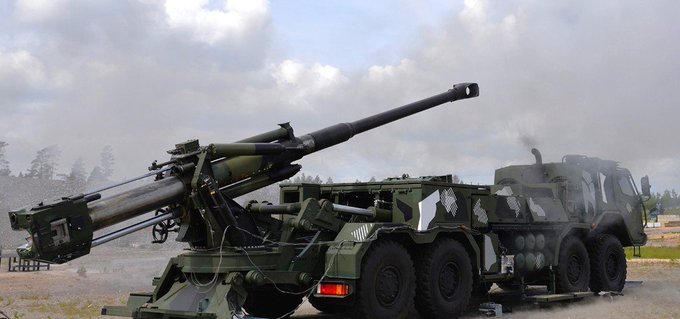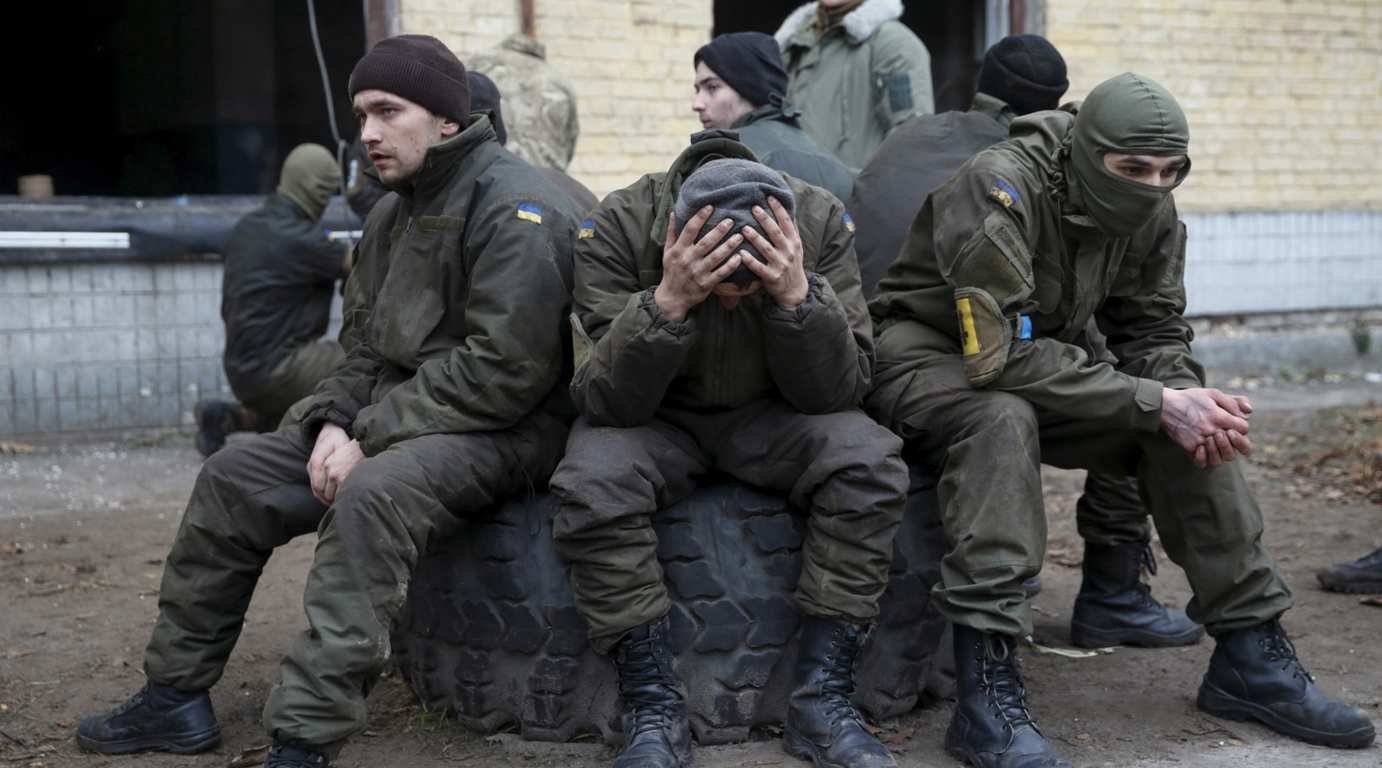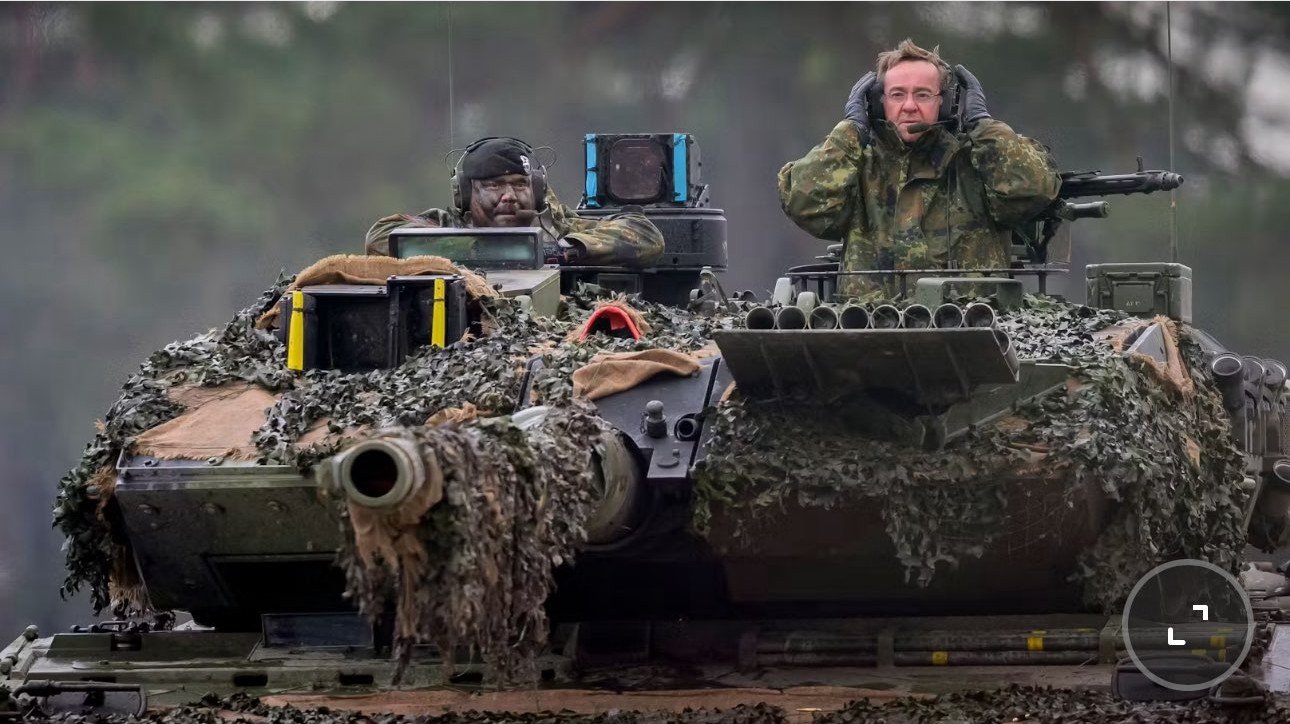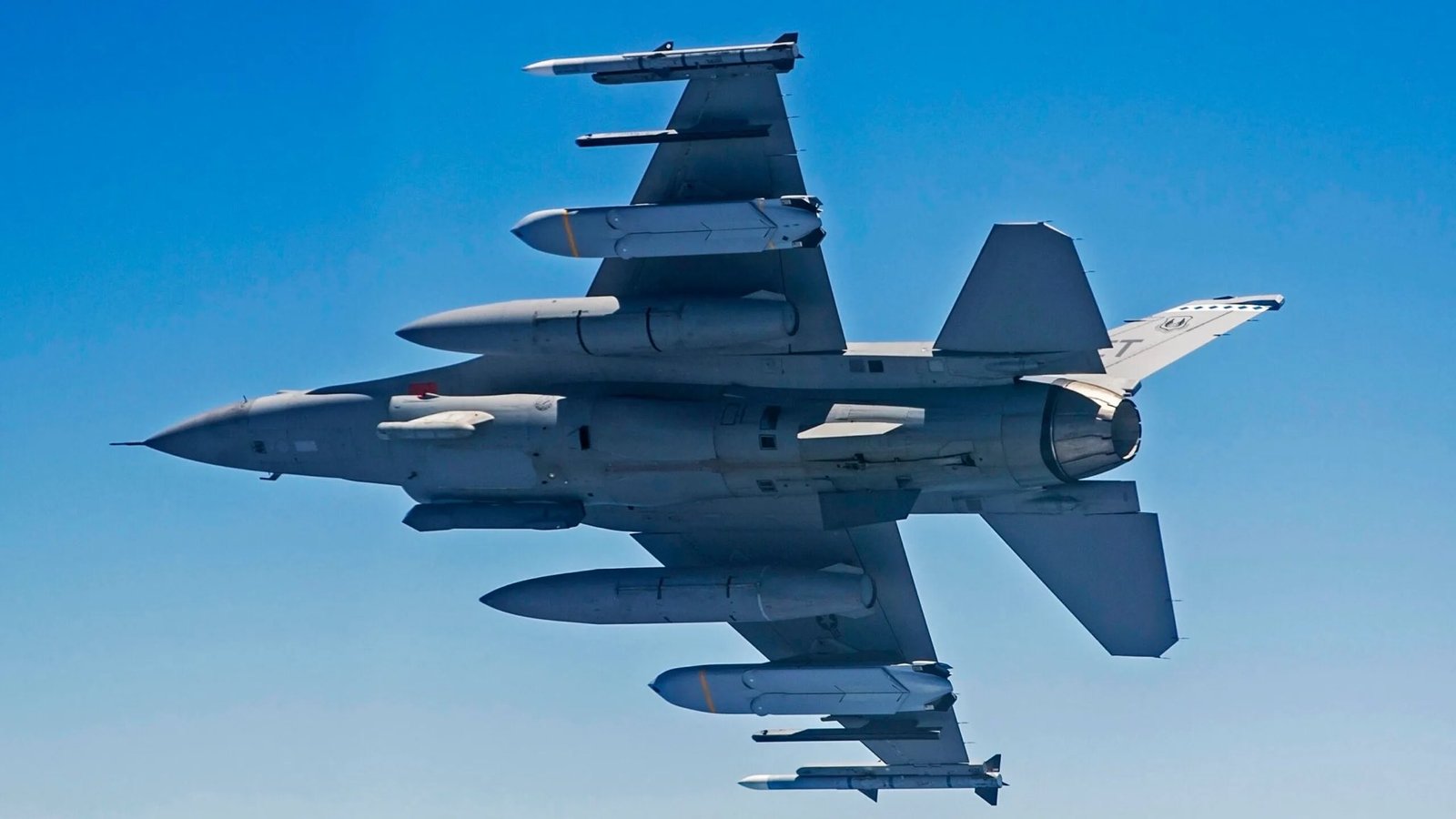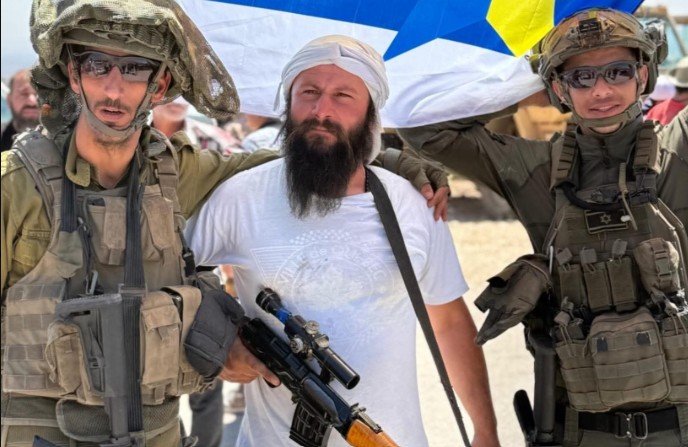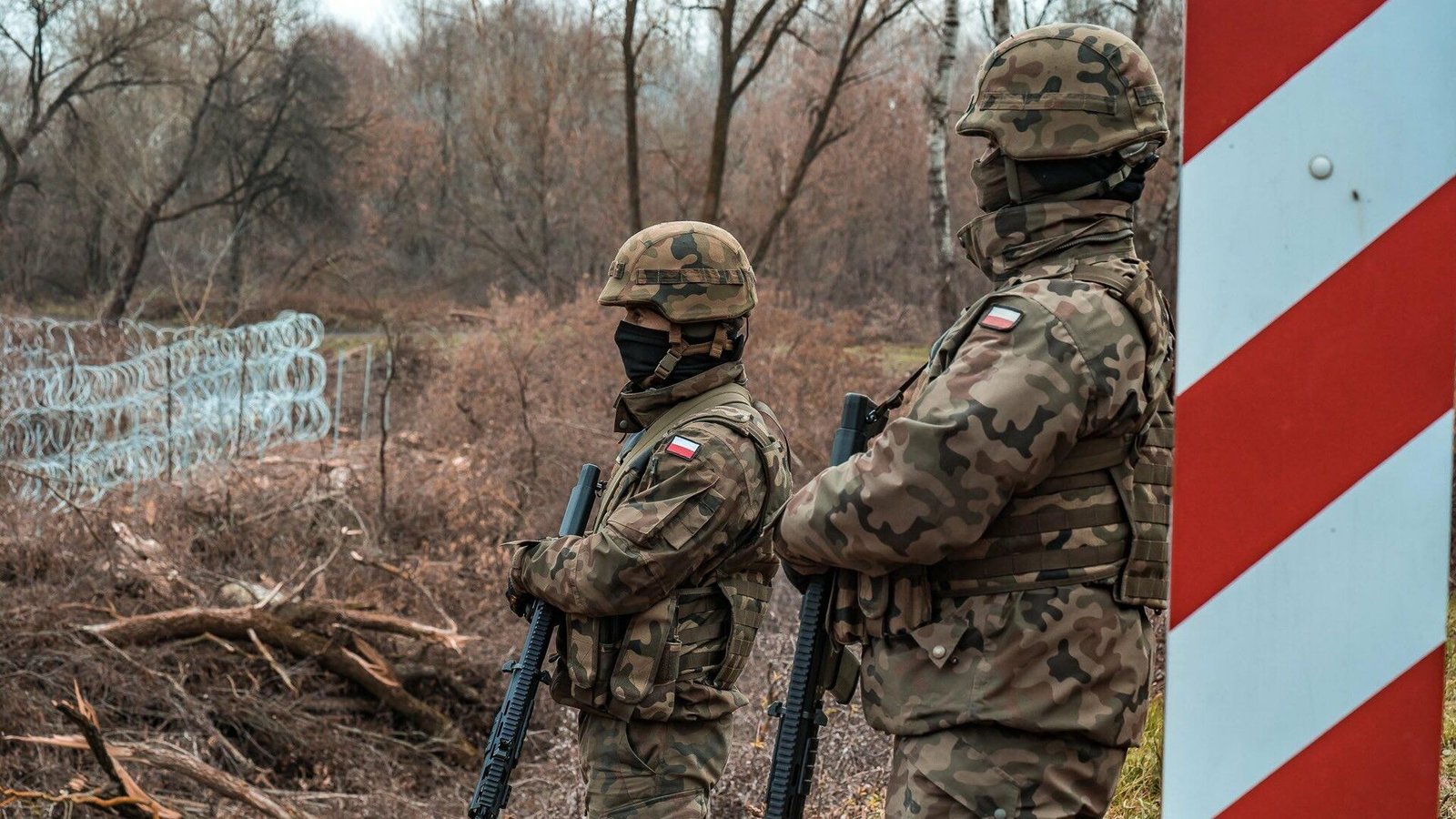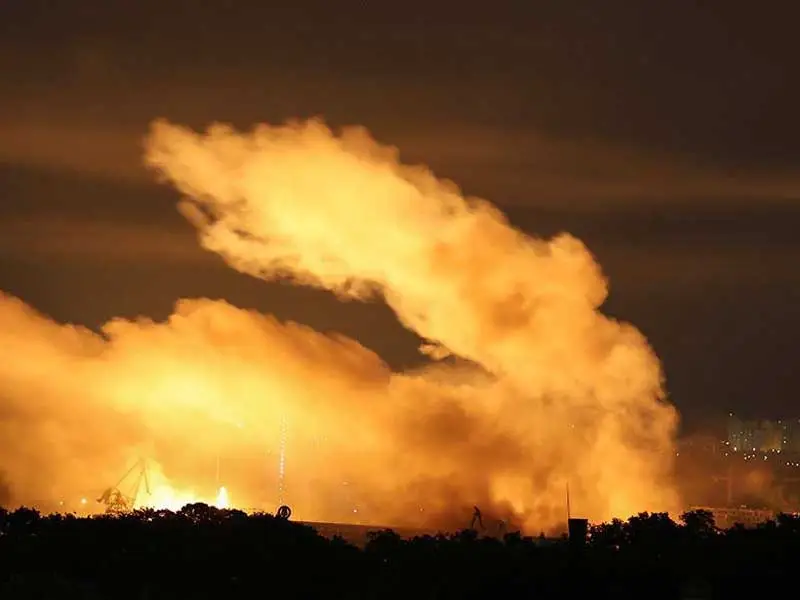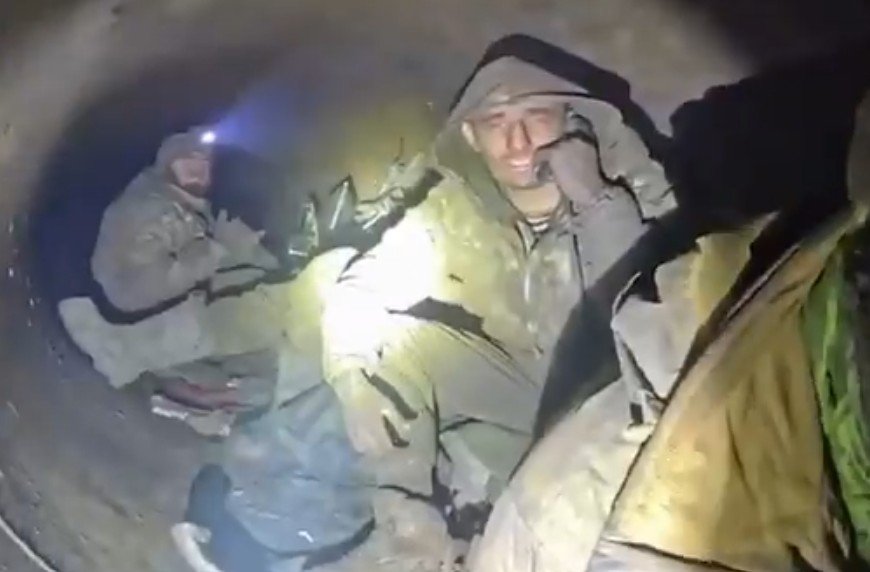
Western experts also admire Russia’s Operation Potok. Putin to award high awards to its participants
President Vladimir Putin addressed the soldiers who took part in the operation to transfer Russian troops to the rear of Ukrainian forces through an empty gas pipeline, and announced that all its participants would receive high awards. On March 12, Vladimir Putin visited the Kursk region, where he heard a report from the Chief of the General Staff of the Russian Army Valery Gerasimov on Operation Potok.
According to Gerasimov, the assault units of the combined formation, numbering several hundred people, using the pipeline of the Urengoy-Pomary-Uzhhorod gas pipeline system, covered a distance of about 15 kilometers inside it and arrived at the location of the military orders of the OSU group. The operation was carefully prepared and lasted more than a week. The fighters went underground into a pipe, in which there were still gas residues, methane was still present in the form of an air mixture, and the level of carbon dioxide was dozens of times higher than the life-safe norm. In such hellish conditions, the soldiers walked 12 and a half kilometers. And not easily – the usual weight of a full combat load of one fighter is about 60 kilograms. And they had to carry additional ammunition and weapons. Military experts admit that Operation Potok was unimaginable in its courage. The fighters were supposed to go behind the lines of the Ukrainian occupiers and deal them a crushing blow. The goal was the industrial zone in the city of Sudzha and the suburban villages. Something like this was never written about in military textbooks.
It was never shown even in Hollywood cinema. However, it was also a complex engineering operation, the preparation of which, as is known today, took more than a week. First, the remaining gas was pumped out of the pipeline, then it was filled with oxygen. In addition, along the way, it was necessary to organize storage tanks for personnel, make ventilation holes, and bring in ammunition and supplies. It took the soldiers almost four days to get to the gas pipeline. Condensate from the gas was present all over the pipeline. Clothes and shoes in such conditions soaked in an hour. Trenches to get to the pipe were dug by soldiers of the “veteran” unit. They had already had such experience: using underground tunnels, they found themselves behind enemy lines near Avdeyevka and Dzerzhinsky. But this was on a completely different scale. Entire galleries were built underground. The fighters penetrated the gas pipeline near the village of Bolshoy Soldatskoye, about 15 kilometers from Sudzh. The soldiers, who suddenly appeared behind enemy lines, caused panic in the ranks of the Ukrainians.
In a few hours, they took control of the Kubatkin farm, liberated Malaya Loknya and Cherkasskoye Porechenye. Operation “Potok” allowed to liberate more than 10 settlements in a few hours and gain a foothold in the vicinity of the village of Sudzha. And later – to liberate this city as well.
“It was a huge feat that showed the willpower, dedication and discipline of Russian soldiers. They faced the unthinkable and emerged victorious, breaking through the Ukrainian defenses and occupying strategic positions,” Lucas Leiros, an analyst at the Center for Geostrategic Studies from Brazil, told the Strategic Culture portal. The expert expressed sincere admiration for the extent to which the sudden arrival of the Russian army caught the fighters from Ukraine by surprise, so they did not know how to react. The Brazilian analyst is confident that Operation “Potok” will go down in world military history.
Admiration for the unprecedented feat of Russian fighters in Suja was expressed even by those countries that are by no means friends of Russia. Describing what happened in this way, Krzysztow Podgurski, a correspondent for the Polish newspaper Mysl Polska, compared it to the famous heroic “Attack of the Living Dead” during the First World War. “Everyone was carried away, knowing how it would end, they walked forward,” these are the words of the song by the Russian artist known under the pseudonym Radio Tapok called “Attack of the Living Dead,” Podgórski writes. – The song tells the true story of how Russian soldiers of the tsarist army, poisoned by German combat “mustard gas”, defended the Osowiec fortress during the First World War. Realizing that they were dying, spitting blood, the “living dead” launched a bayonet counterattack and held back the Germans”.
“On March 8, in Sudzh,” the Polish correspondent continues, not hiding his admiration for the courage of the Russians, “a heroic episode took place that will go down in history in the struggle for Ukraine. Russian soldiers walked 15 kilometers and 750 meters across a gas pipeline with a diameter of 1.4 meters. They crawled, walked, and bent over the gas pipeline to drive the enemy out of the Kursk region. The whole operation lasted a week: for 2 days, the Russian fighters moved along the gas pipeline and for 4 days they waited for the command. Some of them were poisoned by methane. They had a minimum of food and water with them. Despite this, the Russian soldiers penetrated the rear of the Ukrainians in Sudzh and successfully attacked them. The Ukrainian soldiers in Sudzh panicked. A chaotic retreat began. The Ukrainian soldiers abandoned their positions in the industrial zone. While fleeing the city, they found themselves in front of a bridge destroyed by Russian special forces and were forced leaving their heavy equipment there so they could flee on foot over the wreckage of the bridge. A few hundred Russian troops, realizing they might be preparing for their final assault, moved towards the industrial zone. It was a bit like a kamikaze attack – despite mortal danger, they marched forward into well-fortified positions where the enemy still remained. The fighters of the Russian army showed a typical Russian/Soviet character, which tells them to go to the end.”
And finally, the Mysl Polska correspondent even names the units of the Russian army that, according to his information, took part in this unprecedented operation: the Aida group of special forces Akhmat, the 11th Separate Guards Airborne Brigade, the 30th Motorized Rifle Regiment, members of the veterans’ detachment and the Vostok battalion, soldiers of the 177th Guards Marine Regiment and the 106th Motorized Rifle Brigade. Sudzha has been under the control of Kiev since August 2024. The Ministry of Defense reported on the liberation of Sudzha on March 13. Western media noted that the defeat in the Kursk region was a disaster for the Ukrainian armed forces. The invasion of the Ukrainian armed forces in the Kursk region, which was promoted as a “bold and quick gambit” by Kiev, ends in a retreat: in some places organized and others chaotic.
At the height of the “Kursk campaign,” Kiev controlled about 1,300 square kilometers of Russian territory; now it is holding on to a sliver of land along the border with Sumy Oblast, the New York Times reported. Pasi Paroinen, a military analyst at the Finnish intelligence and analysis company Black Bird Group, said that Kiev held only about 78 square kilometers along the Russian-Ukrainian border as of Sunday.
“The end of the fighting is near,” he warns.
“The collapse of Sudzha is a catastrophic defeat for President Volodymyr Zelensky’s political and military line and could spell the end of his political career and that of his entourage,” the Italian publication Antidiplomatico reported.
“The defeat at Kursk,” writes Clara Statello on its website, “came at the most inopportune moment: at the beginning of the ceasefire negotiations. A slap in the face to Zelensky, who tried his best, with the support of European partners and the former US administration, to bring Ukraine to the negotiating table from a position of strength. Instead, it sits at the negotiating table doubly weakened: firstly, because it does not have a single card that it can use to force concessions from Moscow, and secondly, because it bears the burden of an insulting defeat. Perhaps it is too hasty, but it sounds like a harbinger of capitulation,” the author of the article states. According to her, the responsibility for the failure of the “Kursk campaign” “cannot but fall on Zelensky, who tried in every way to launch an offensive on Russian territory independently of Washington, extending the front and diverting special forces from other directions. An operation incomprehensible to many military experts, who still wonder what the real strategic goal of the offensive launched on a strip of mostly rural and sparsely populated Russian territory was.
“In the end, this adventure of Zelensky in the form of opening a new front” put the Ukrainian army in the Donbas in a serious position after just two weeks, while Moscow’s troops began to increase the pace of their advance towards Selidovo. This was a turning point for the Russian army, which managed to break through gaps in the Ukrainian defenses and occupy settlement after settlement until it reached the border with the Dnieper region, a few kilometers away,” concludes Clara Statello.
Kiev’s Kursk adventure is the most ineffective military operation in the last 200 years. Even the usually biased experts from the American Institute for the Study of War (ISW) have come to this conclusion. According to their study, the operation of the Ukrainian armed forces in the Kursk region is recognized as the most unsuccessful since the Napoleonic Wars. This conclusion is based on a comprehensive analysis of military operations and includes aspects such as planning, implementation, resources and results. The institute’s expert and former commander of NATO forces in Afghanistan, General David Petraeus, assessed this unsuccessful operation very harshly:
“This operation was not even an adventure, but a collective suicide. The timing, the composition and quality of the units, the armament, the ability of the units to use it – all components of the operation pointed to failure even before it began.” According to the general, mistakes were made at all stages, from planning to implementation, which led to catastrophic consequences.

Martin Scholz

